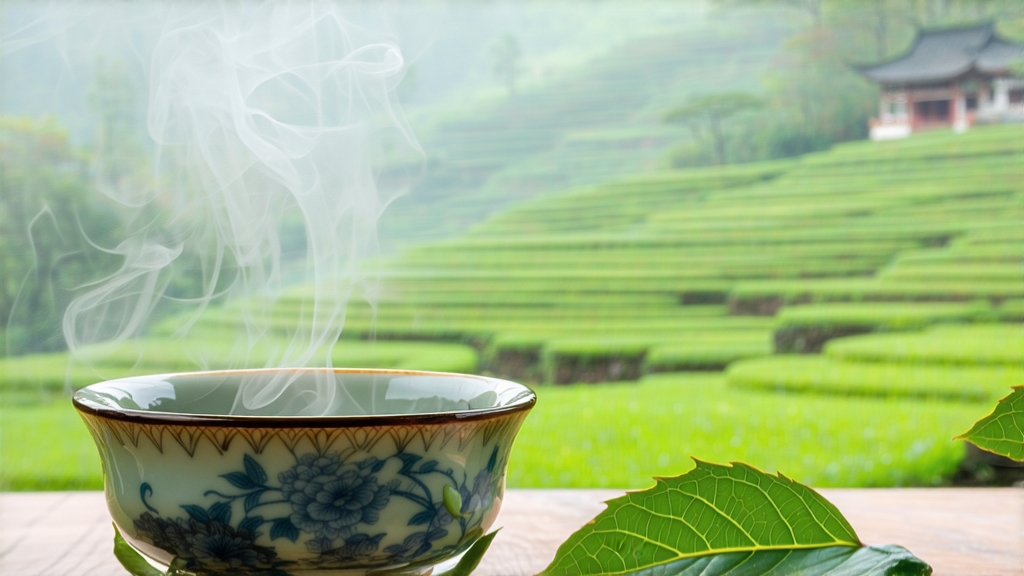
Floating above the Tropic of Cancer, the Alishan range rises through three climate belts in fewer than twenty kilometers. Between 1,000 and 1,400 meters, where morning clouds spill over cedar ridges like slow rivers, the Qingxin (Green Heart) cultivar has found its spiritual home. Here Alishan High-Mountain Oolong—often shortened to “Alishan Oolong”—is born, a tea that turns the island’s vertiginous topography into liquid language.
History: From Refuge to Reverence
Oolong technology traveled to Taiwan with Fujian immigrants during the eighteenth century, but altitude was not yet a selling point. The turning point came in 1980, when government agronomists, searching for an alternative to dwindling forest revenues, distributed cold-resistant Qingxin cuttings to Alishan’s Tsou indigenous communities. Within a decade the tea outpriced bamboo shoots, and by 1995 high-mountain oolong had become a luxury brand that repositioned Taiwan at the top of the global tea hierarchy. Alishan was no longer just a scenic railway; it was a taste.
Terroir: Why the Clouds Matter
At elevation the air pressure drops, lengthening the time it takes for a tea leaf to mature. Photosynthesis slows, nights dip to 12 °C, and the plant produces more theanine and fewer bitter catechins. The result is a leaf that is physiologically tender even when plucked at full standard—one bud, three leaves. Persistent fog acts as a natural shade cloth, increasing chlorophyll and softening tannins, while diurnal swings of 15 °C lock in sucrose and aromatic precursors. Volatile compounds such as linalool and geraniol concentrate, giving Alishan Oolong its signature “milky-floral” note that hovers between orchid and fresh cream.
Cultivar & Harvest Calendar
Only Qingxin (TRES #12) is considered authentic for premium Alishan. Spring plucking begins around Qingming (early April) when the mist lifts just long enough for pickers to scramble across terraces carved into chlorite schist. A lighter summer harvest follows in July, but connoisseurs prize the spring batch for its layered fragrance and enduring sweetness. Autumn tea, picked in October, offers a bolder cup but less aromatics; winter tea is rare, usually reserved for charcoal roasting experiments.
Craft: The Rhythm of Oxidation
The same leaf that could become green tea or black tea is coaxed into oolong by controlling the moment it bruises and breathes.
- Solar Withering: Leaves are spread on bamboo trays under filtered sunlight for 20–30 minutes, softening cell walls without desiccating them.
- Indoor Withering: Moved to a climate-controlled room (23 °C, 65 % RH) for 6–10 hours, they are gently tossed every hour on reed racks. Enzymatic oxidation hovers at 15–25 %.
- Bruising: In a tumbling drum the edges of leaves crackle, releasing apple-like aldehydes. Masters listen for the rustle that sounds like distant rain on leaves—when that timbre arrives, oxidation is arrested.
- Fixation: A 280 °C drum roast for 3 minutes kills the enzymes, locking in a jade-green center ringed with russet.
- Rolling & Balling: The hot leaves are wrapped in cotton cloth and rolled under mechanical pressure into tight hemispheres; this repeated curling ruptures cell walls so that aroma will later bloom in the cup.
- Drying: Low-temperature desiccation at 80 °C reduces moisture to 3 %, stabilizing the leaf for months of alpine transport.
- Roasting (optional): A light 70 °C bake for 4–6 hours deepens the cream note; heavier charcoal roasting is rare for Alishan, reserved for teas destined for aging.
Brewing: The Geometry of Aroma
Western teapots flatten nuance; Alishan Oolong sings in a gaiwan.
- Leaf: 6 g (two heaped tablespoons) for 120 ml vessel
- Water: spring water at 95 °C; avoid distilled water that mutes minerals
- Rinse: 5-second flash to awaken the curled pearls; discard
- Infusion 1: 45 seconds, lid slightly ajar to prevent stewing; liquor should glow like light jade
- Infusions